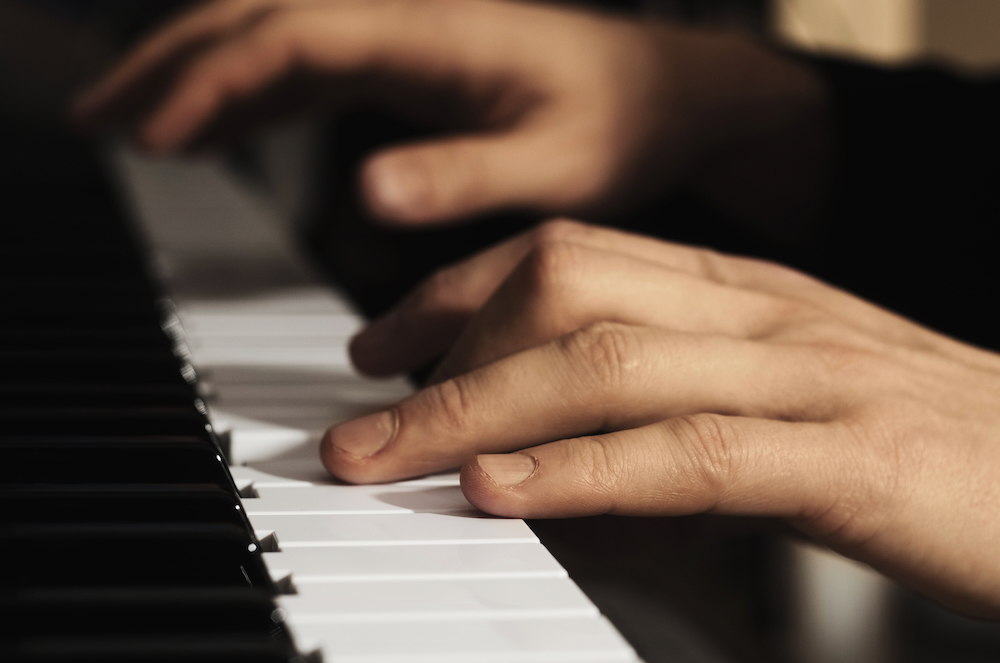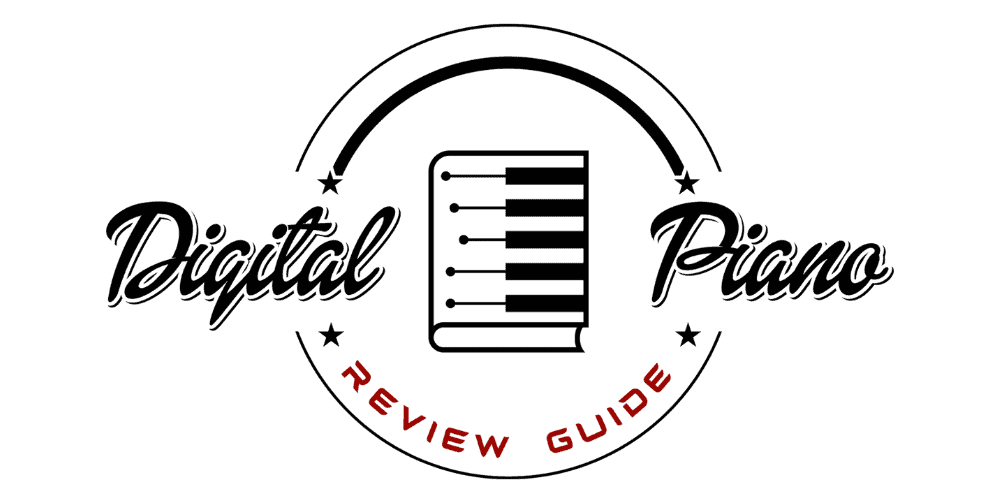8 Piano Brands to Avoid (and What to Buy Instead)

We all love digital piano, but the truth is that some brands are a little better than others. Of course, it moreso comes down the target demographic of those buying the pianos, and the materials and features that go into the instruments. But with that said, here is our list of piano brands to avoid (and a few brands we think are worth considering instead).
Digital Piano Brands to Avoid

Now before we get started, I don’t hate any of these pianos or piano brands. I am not, in any way, recommending that you disregard them or not purchase them. In fact, some of the brands on this list have made pianos that I have used and very much enjoy.
But with that said, there are a ton of options to choose from on the marketplace. And in order to choose properly, there has to be some sort of ranking or hierarchy, as not every piano (or brand) is created equal.
Some of the brands on this list will make pianos that you love—and I think that’s great! But with that said, here’s our personal list of piano brands to avoid (and a few examples of other brands you might want to consider instead).
Gewa
Let’s get started with Gewa. Now this is a commonly found brand of digital piano, because they can be acquired for a lower price point than other quality digital piano brands. Unfortunately, they are at a lower price point for a reason.
Gewa digital pianos might look nice, but get a little closer and you can tell how cheaply constructed they are. The keys feel decent enough and the action is okay, but the sound output tends to be the real deal-breaker.
The pre-recorded voices leave much to be desired as well, sounding very much like the MIDI files of old instead of natural instruments.
Buy This Instead

So, I am going to start this recommendation by offering Casio my sincerest apologies. The first keyboard I ever played was a cheap little Casio from the early 80s and, unfortunately, that Donkey Kong-sounding little rectangle shaped my opinions on Casio’s for the next twenty years.
I am happy to say that Casio has definitely upped their digital piano game since then. Casio makes a fine budget piano with a good sound system, nice action, and natural sounding voices. My debt is paid, Casio.
I’d recommend the following Casio digital pianos:
- Casio PX-S3100 (if you want a portable piano)
- Casio PX-870 (if you want more of an upright style piano)
- Casio PX-5S (if you want a digital stage piano)
Suzuki
I know what you’re thinking: “Hey, are you talking about the same Suzuki that sells motorcycles and jet skis?” Yes, I am—and that should be your first clue.
While Suzuki is a well-known brand in the automotive industry, that reputation didn’t quite translate over into the music industry. Suzuki pianos look nice and there are models with lots of shiny buttons and options, but I don’t think this is the piano you want to kick off your journey into the world of piano with.
Let’s start with their keys. The keys have almost no weight to them; they feel nothing like a real piano should. Pressing them hard or soft makes almost no difference in our experience, as this piano has almost no dynamic (loud and soft) range.
This is a huge problem, especially for a beginner just developing their touch, dynamic control, and technique.
Even if you were to overlook that problem, the sound quality is disappointing. The voices, including the piano voice, sound extremely artificial—especially when compared to the acoustic piano they’re meant to imitate.
Buy This Instead
You what other company makes jet skis, motorcycles, and pianos?
Yamaha—only they do a great job of doing everything all at once.
I’d recommend the following Yamaha digital pianos:
- Yamaha P-125 (if you want a cheap digital piano)
- Yamaha CP-88 (if you’d love a nice Yamaha stage piano)
- Yamaha YDP-165 (if you’re looking for an upright digital piano, you can’t go wrong with this Yamaha Arius piano).
Alesis
A good digital piano should give you something pretty close to the experience and feel of playing on an actual upright acoustic piano. And while we definitely need a variety of affordable price points in the digital piano space, I think a comparatively priced Yamaha or Casio piano will provide you with a more satisfying piano playing experience than Alesis.
With that said, I can’t say a whole lot of bad about Alesis. I tried out the Alesis Prestige Artist, and thought it was a pretty good piano! It came with a solid amount of features, had pretty good sound, and was an easy to use portable piano that could easily sit on a work desk (let alone a dedicated piano stand).
But, when stacked against the likes of its peers (like the Casio PX-S1100 or even the Yamaha P-125), I think this is a case where name recognition is important, because it signals a certain standard of quality and consistency to the buyer. Just like buying a Sony television is probably going to provide you with a better product and experience compared to its TCL counterpart, I also feel similarly about Alesis compared to its competitors in the industry.
I do think it’s an unfair leap to say that the Alesis brand should be avoided—that’s not a fair statement. But I do think it’s fair to say that it would be wise to look into all of your options before making a purchase.
Buy This Instead

We’ve talked about Casio and Yamaha already, and rightfully so. But Roland digital pianos definitely deserve to get some roses thrown their way, as well.
If you’re open to buying a Roland, consider one of these:
- Roland FP-10 (similarly priced to the Alesis Prestige and Prestige Artist)
- Roland RD-88 (a great option if you’re interested in buying a Roland stage piano)
- Roland RP-701 (this is one you’d consider if you’re looking for more of an upright and have the dedicated floor and room space).
- You Might Also Like: Roland FP-60X vs Roland FP-90X
Williams
You can find all kinds of Williams digital piano products, from portable keyboards to baby grands.And once you find them, you should keep on walking.
First off, know that Williams is Guitar Center’s house piano brand. They are manufactured in China by another company and produced for Guitar Center, so Guitar Center actually has no part in their construction and quality.
They look nice and they’re affordable, but that’s where the compliments end.
My first complaint will be with the keys. For something that looks like a piano, the keys don’t feel like piano keys at all. They are far too light, and the black keys are set in a weird way that makes them click when you press them.
The sound isn’t consistent at all, either. If you’re learning how to play the piano, dynamics are very important in developing your touch. That becomes almost impossible with this piano. The volume is inconsistent across the keyboard and the sound doesn’t change all that much when you press them harder—the way a real piano would. You might notice that Williams offers lots and lots of voices and tracks, but don’t confuse quantity over quality.
The pedal is pretty useless too. Pressing it down should sustain your notes, but on a Williams piano, the sustain is quite short. As such, it becomes more of a challenge to practice your pedal technique — or any technique — with this instrument.
Buy This Instead
Get a digital Kawai digital piano, as it sounds good, has very nice action, and is built great.
Some Kawai pianos I’d recommend are:
- Kawai ES110 (this is ideal if you desire a portable Kawai piano)
- Kawai MP11SE (this is great if you want a stage piano)
- Kawai KDP-120 (if you’re looking for an upright piano by Kawai, give the KDP-120 a try).
Acoustic Piano Brands to Avoid
Let’s begin with Wurlitzer.
Wurlitzer
Now, this is not to say that Wurlitzer makes bad pianos, because they definitely don’t. Like the noble generic Oreo, they’re…not bad. They do what they need to do. You bring them to a party and you’re still kind of a hero.
But for a serious musician or someone looking to really take a step up from that digital keyboard or old acoustic piano they began learning on? Wurlitzer is not it.
The biggest problem Wurlitzer has is that they are ridiculously hard to tune. Not that you’ll be tuning it yourself, that’s a complicated process, but you’ll definitely be paying a piano technician more to tune it than you would another brand.
Other than that, Wurlitzer pianos are pretty durable and sound okay, but they are best left as a beginner instrument and not a “level-up instrument.” So, if you’re a beginner on a budget, this could work for you, but otherwise, it’s probably best to consider another brand.
Buy This Instead
The Rudolph Wurlitzer Company has been around since 1853, but they were acquired by Baldwin Piano Company in 1988 and all of their pianos produced from then until 2009 (when the brand ceased manufacturing) were made overseas. You can only buy a used Wurlitizer, so if you’re going to buy something manufactured overseas, just start with something of higher quality and go with a used Baldwin instead.
- You Also Might Like: Baldwin Piano Value
Young Chang
A step down from Wurlitzer puts you firmly in Young Chang territory.
Young Chang pianos are a solid—they’re certainly not terrible. But they’re just not very good either. And while Wurlitzer pianos are at least well-made instruments, the same cannot be said for Young Chang. My biggest complaint about this brand is that, while they look nice, there are a lot of short cuts taken with construction.
Pop the hood, take a peek inside, and you’ll see what I mean. Cheap, cheap, cheap. Because they aren’t as durable, cheap parts wear out and break and need to be replaced.
That might be worth it to you if the sound was great, but I don’t think it is. A Young Chang has a muted, dull sound and clicky, plastic keys that I just do not enjoy playing on.
Buy This Instead
Even if you’re on a budget, you’re out to buy a good piano. And if you’re going the acoustic route, you know you’re going to have to drop a few thousand dollars. And if that’s the case, just get a Yamaha B1 instead. It’s at about the same price point as a Young Chang, only Yamaha has a great sound and is a solid, well-made instrument.
Samick
I will be honest and tell you, dear reader, that part of me was gleefully looking forward to writing this article. And that’s because, after all these years, I’m finally going to get the chance to absolutely rail on these next two piano brands.
And it’s going to be cathartic.
Strap in.
We begin our sharp descent with Samick Pianos. Now if Wurlitzer is the generic Oreo, Samick pianos are the generic toilet paper of the piano world. It gets the job done…but at what cost?
I wish I could say that I was exaggerating, but I am not. Don’t bother with Samick if you don’t have to. They are cheaply built, the action of the keys is a complete crapshoot and they sound terrible.
A beginner would find it very difficult to develop good technique with a piano like these. The keys simply do not feel right underneath your fingertips.
It doesn’t hold its tuning long at all either and, after just a few years, your piano is going to start breaking down and requiring repairs that cost much more than the instrument is worth.
Nothing about playing on this piano is going to inspire you to want to keep playing, and nothing about the sounds you’re making are going to inspire anyone that lives with you to ever let you start again.
Avoid at all costs.
Buy This Instead
Spend a little more on yourself and get a piano that’s going to sound good, be nice to play on, and last a long time. Get yourself a nice Kawai upright. Kawai makes a solid upright. They’re affordable, the action is nice, and they sound great. Everyone who listens to you practice will be grateful.
Pearl River
As a very busy accompanist for middle and high school band, orchestra, and choral competitions, I’ve had to play my fair share of whatever-piano-happens-to-be sitting-in-the-room. And for school districts looking to get the most bang for their buck, that means I’ve played on a lot of Pearl Rivers.
Here is my honest assessment. If you are looking at that shiny new Pearl River in the window, let me just save you the trouble–I’m just not the biggest fan.
In my personal experience, I found the sound to be a bit dull and the tuning at the high and low ends was quite never right. I also found that the pedals squeak a bit like a rocking chair and the keys feel quite plasticky and have stiff, disappointing action.
Of course, you can always get your piano repaired, if need be, but no one wants to spend more time and money repairing or tuning a piano compared to playing it.
As with a lot these kinds of situations, your mileage may vary.
Conclusion
I’d like to wrap up this article by giving you some advice, one musician to another.
When it comes to a piano — or any musical instrument — always get the best that you can afford.
Your piano is going to be your piano, the instrument that you learn on or advance with, and it’s going to live with you for a long time.
So, if you are serious about your musical journey, you’re going to need to make an investment. Get yourself an instrument that you love to play and an instrument that makes you happy and makes you sound the best that you can. And that, really, is the most important part!
Hopefully, my assessment of piano brands to avoid has helped you better determine where to focus your energy when it comes to buying a new piano.
This article was written by Sara and edited by Michael.






